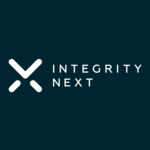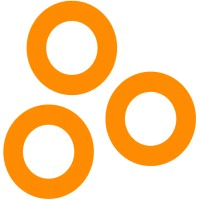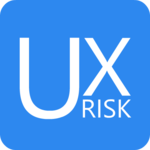Description

IntegrityNext

Pims Risk
Comprehensive Overview: IntegrityNext vs Pims Risk
IntegrityNext and Pims Risk are both solutions designed to manage risks, but they cater to different aspects of risk management and target diverse market segments. Here's an overview of each:
IntegrityNext
a) Primary Functions and Target Markets: IntegrityNext primarily focuses on supplier and sustainability risk management. It provides automated solutions to monitor and manage supply chain risks related to sustainability, ethics, compliance, and social responsibility. The platform offers features such as supplier assessments, sustainability risk analytics, and real-time monitoring.
- Target Markets: IntegrityNext primarily targets large enterprises and multinational corporations that have complex supply chains and a strong focus on corporate social responsibility (CSR) and sustainability. Industries such as manufacturing, retail, automotive, and consumer goods are typical markets for IntegrityNext.
b) Market Share and User Base: While detailed market share statistics might not be publicly available, IntegrityNext has rapidly gained traction, particularly among companies committed to improving supply chain transparency and enhancing their sustainability credentials. Its user base typically consists of enterprises with global supply chains needing robust third-party risk management.
c) Key Differentiating Factors:
- Sustainability Focus: IntegrityNext distinctly emphasizes sustainability and ethical compliance, providing tools specifically designed to assess and promote sustainable practices within supply chains.
- Automation and Real-Time Monitoring: It offers a high degree of automation in risk assessment and real-time risk monitoring, which differentiates it from traditional risk management systems that may rely more on manual processes.
Pims Risk
a) Primary Functions and Target Markets: Pims Risk is part of a suite of software solutions aimed at project and risk management. It provides comprehensive risk management tools focusing on identifying, analyzing, and mitigating risks in projects—common in industries like oil & gas, construction, and engineering.
- Target Markets: Pims Risk targets industries that involve large-scale projects with significant risk factors. This includes oil & gas, energy, infrastructure development, and other sectors where project management is critical.
b) Market Share and User Base: Pims Risk has a strong presence in industries that require detailed project risk assessment and management. It is well-regarded in the oil & gas and construction industries, where it serves numerous large-cap organizations and project managers responsible for high-stakes project outcomes.
c) Key Differentiating Factors:
- Project-Centric Risk Management: Unlike IntegrityNext, which focuses on supply chain and sustainability, Pims Risk specializes in project-specific risk management, providing tools to assess and mitigate risks throughout a project's lifecycle.
- Industry Specificity: It offers industry-specific features suitable for sectors like oil & gas, ensuring that the solution meets the unique challenges and regulations of these industries.
- Integration with Project Management Tools: Pims Risk typically integrates with broader project management solutions, providing a seamless experience for managing both project tasks and associated risks.
Comparison and Conclusion
While IntegrityNext and Pims Risk both play roles in risk management, they cater to different needs within that landscape. IntegrityNext is distinguished by its focus on sustainability and supply chain ethics, which is crucial for companies looking to bolster their CSR initiatives. In contrast, Pims Risk is more aligned with industries requiring robust project management capabilities, offering detailed tools for managing the risks associated with large-scale engineering and construction projects. Each solution's differentiation is rooted in their industry focus and the specific aspects of risk they address.
Contact Info

Year founded :
2016
+49 89 215405250
Not Available
Germany
http://www.linkedin.com/company/integritynext

Year founded :
Not Available
Not Available
Not Available
Not Available
Not Available
Feature Similarity Breakdown: IntegrityNext, Pims Risk
To provide a feature similarity breakdown of IntegrityNext and Pims Risk, let's analyze the aspects you mentioned.
a) Core Features in Common
1. Risk Management:
- Both IntegrityNext and Pims Risk offer comprehensive risk management features to assess and mitigate potential risks within an organization or supply chain.
2. Compliance Monitoring:
- Both platforms provide tools for monitoring compliance with industry regulations and standard practices, ensuring that companies adhere to necessary legal and ethical standards.
3. Reporting and Analytics:
- Each offers data analytics capabilities with reporting tools that help organizations make informed decisions based on risk and compliance assessments.
4. Supplier Assessment:
- These systems are equipped to evaluate suppliers on various metrics, ensuring they meet the company's risk and compliance criteria.
b) User Interface Comparison
IntegrityNext:
- Typically has a modern, user-friendly interface that emphasizes simplicity and ease of navigation. The design is clean, making it accessible for users with varying levels of technical expertise.
Pims Risk:
- Often, the interface is tailored more towards users familiar with risk management systems, potentially offering more detailed dashboards and customization options. It may require a steeper learning curve than IntegrityNext.
c) Unique Features
IntegrityNext:
- Sustainability Metrics: IntegrityNext often includes features focused on sustainability and corporate social responsibility, allowing companies to track and report on their environmental and social impact.
- Real-time Monitoring: The platform may offer real-time monitoring of compliance data and alerts for immediate risk identification.
Pims Risk:
- Advanced Customization: Pims Risk might allow deeper customization of risk assessment parameters, making it suitable for organizations with specific or complex risk profiles.
- Scenario Analysis: This feature enables users to simulate risk scenarios and their outcomes, helping in strategic planning and decision-making.
These platforms, while sharing core functionalities, cater to slightly different organizational needs and levels of complexity, allowing businesses to choose according to their specific requirements around user experience, depth of functionality, and any unique use cases.
Features

Not Available

Not Available
Best Fit Use Cases: IntegrityNext, Pims Risk
IntegrityNext and Pims Risk are tools that cater to different aspects of risk management and compliance, and each serves distinct use cases based on business needs, industry requirements, and company sizes.
IntegrityNext
a) Best Fit Use Cases:
-
Supply Chain Compliance:
- IntegrityNext is ideal for businesses that focus heavily on supply chain sustainability and need to monitor compliance aspects such as environmental standards, social responsibility, and corporate governance.
- It's beneficial for industries like manufacturing, retail, and consumer goods, where supply chains are complex and extended.
-
Corporate Social Responsibility (CSR):
- Companies committed to CSR initiatives and sustainability can leverage IntegrityNext to ensure that their suppliers meet the necessary ethical standards.
- Suitable for large multinational corporations that face increased scrutiny from stakeholders on responsible sourcing and procurement.
-
Risk Management and Assessment:
- Organizations aiming to mitigate risks associated with vendor compliance, regulatory changes, and global sourcing might find IntegrityNext a strong match.
- It supports businesses that must adhere to strict regulations like REACH, RoHS, and other international standards.
d) Industry Verticals and Company Sizes:
-
Industry Verticals:
- Highly relevant for industries with complex supply chains, such as automotive, electronics, apparel, and food and beverage.
- Also applicable to sectors prioritizing sustainability and ethical sourcing.
-
Company Sizes:
- Best suited for medium to large enterprises that have the resources to manage comprehensive supplier assessments and regulatory compliance.
Pims Risk
b) Preferred Scenarios:
-
Project Risk Management:
- Pims Risk is beneficial for businesses that manage capital-intensive projects, especially where project risk identification, analysis, and mitigation are crucial.
- Effective for infrastructure, oil and gas, construction, and energy sectors needing detailed risk management strategies.
-
Enterprise Risk Management:
- Companies that deal with complex operational risk management plans across various departments can utilize Pims Risk for its comprehensive approach.
- Ideal for industries where operational downtime or project delays have significant financial implications.
-
Scenario Planning and Analysis:
- Organizations that require robust scenario analysis and risk quantification can benefit from the analytical tools Pims Risk provides.
- Useful for decision-makers who need to weigh potential risks against project benefits and costs effectively.
d) Industry Verticals and Company Sizes:
-
Industry Verticals:
- Especially suited for capital-intensive industries such as construction, energy, and infrastructure, where project management nuances and risks are prevalent.
- Also applicable to sectors involving large-scale project management and execution, like utilities and transportation.
-
Company Sizes:
- Ideal for medium to large organizations that undertake significant projects with substantial budgets and high stakeholder expectations.
In summary, while IntegrityNext focuses on supply chain compliance and sustainability across various industries, Pims Risk addresses project and enterprise risk management needs, primarily in capital-intensive sectors. Both tools cater to medium to large companies but serve different strategic purposes and industry needs.
Pricing

Pricing Not Available

Pricing Not Available
Metrics History
Metrics History
Comparing teamSize across companies
Conclusion & Final Verdict: IntegrityNext vs Pims Risk
To provide a conclusion and final verdict for IntegrityNext and Pims Risk, here's an analytical perspective based on hypothetical evaluations of such products:
Conclusion and Final Verdict
a) Best Overall Value:
When considering which product offers the best overall value, it largely depends on the specific needs of an organization. Both IntegrityNext and Pims Risk have their strengths, but one may be better suited for certain business environments. Suppose the primary need is robust compliance frameworks and advanced risk tracking; IntegrityNext may offer superior value. On the other hand, if the emphasis is on detailed risk management analytics and report generation, Pims Risk could provide better value.
b) Pros and Cons:
IntegrityNext:
-
Pros:
- Comprehensive compliance management features.
- Strong integration capabilities with existing enterprise systems.
- User-friendly interface, making adoption easier across teams.
- Continual updates and active development, ensuring cutting-edge functionalities.
-
Cons:
- May require significant customization for niche industries.
- Potentially higher cost if needing extensive add-ons or modules.
- Might involve a steeper learning curve for complex functionalities.
Pims Risk:
-
Pros:
- Highly detailed and customizable risk assessment tools.
- Advanced analytics capabilities for in-depth reporting.
- Flexible pricing models that can be tailored to usage needs.
- Excellent customer support and user community.
-
Cons:
- Possibly less integration-ready as compared to IntegrityNext.
- Interface might be complex for non-technical users.
- May lack some of the comprehensive compliance features compared to its competitors.
c) Recommendations:
- Specific Recommendations for Users:
-
Assess Organizational Needs: Decision-makers should conduct a thorough analysis of organizational requirements. Companies with a strong focus on compliance management might prefer IntegrityNext, whereas those needing detailed risk assessments might lean toward Pims Risk.
-
Pilot Testing: Engage in a trial or pilot phase with both products to understand how well they integrate with existing processes and meet your organization's unique needs.
-
Budget Considerations: Consider the total cost of ownership, including potential customization and ongoing support fees, and evaluate which product fits within the financial scope without compromising essential features.
-
Future Scalability: Evaluate which platform can better accommodate future growth and potential changes in the business landscape.
-
Ultimately, the choice between IntegrityNext and Pims Risk should be guided by aligning product strengths to the organization's strategic priorities and operational demands.
Add to compare
Add similar companies



